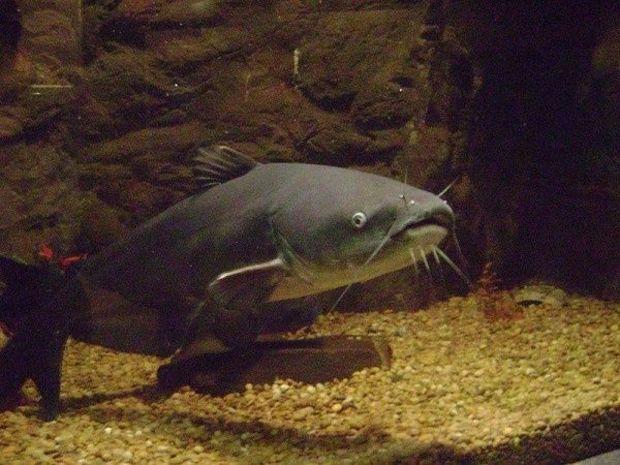 The Bay Journal has a fascinating article on blue catfish and the threat they bring to the Chesapeake. The species were introduced to the upper James River by the Department of Game and Inland Fisheries in the 70s, and over time they've not only exploded in population but also proved to be significant predators when it comes to blueback herring, blue crabs, and menhaden. The fish are native to the Mississippi River drainage, but are also found in the Ohio and Arkansas rivers.
The Bay Journal has a fascinating article on blue catfish and the threat they bring to the Chesapeake. The species were introduced to the upper James River by the Department of Game and Inland Fisheries in the 70s, and over time they've not only exploded in population but also proved to be significant predators when it comes to blueback herring, blue crabs, and menhaden. The fish are native to the Mississippi River drainage, but are also found in the Ohio and Arkansas rivers.
In Burwell Bay, a small area of the James River not far upstream from Newport News, they estimated blue catfish had the potential to consume 560,000–720,000 blue crabs. For perspective, that would be nearly 1 percent of the 765 million blue crabs estimated to be in the Bay in early 2012 by the annual Blue Crab Winter Dredge Survey.
In that same area, the study estimated blue catfish may have consumed 670,000–820,000 Atlantic menhaden and 1.9 million–3.1 million softshell clams.
Farther upstream, near Manchester, they estimated that blue catfish might have consumed 8,000–10,000 blueback herring — a once-abundant species whose East Coast population is at a record low — and 14,000–18,000 white perch.
Complicating matters, blue catfish have been found in areas of higher salinity (17 parts per thousand, whereas fishery scientists originally considered their salinity tolerance to cap off at about 14 parts per thousand). The fish are big, too. They can grow to 100 pounds or more, and are relatively non-discriminating when it comes to their prey (they've even been known to attack scuba divers). They're frequently found underneath schools of feeding striped bass.
Because blue catfish are such opportunistic feeders, he said, it is hard to infer from one study what overall impact they have on a given resource. “Wherever you get a sample in these rivers, and its timing in a given year, is going to influence what you say the blue catfish diet is,” he said. “If it’s an abundant resource, they are targeting it.”
Greenlee expressed doubt that much can be done to control blue catfish in the region because their population is well-established, and well-adapted. “Given the status of the species in the watershed and lack of viable management options,” he said, “it is highly unlikely we are going to control the species in the Bay.”
You have to love non-native species, don't you? Have you ever caught one? We hear they're delicious. Read the whole article here.